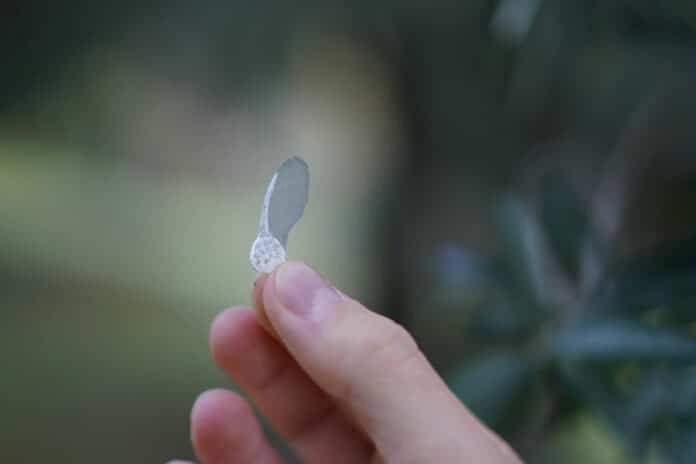Continuous and distributed monitoring of environmental parameters may open up new avenues for developing sustainable strategies to tackle climate challenges. However, the use of state-of-the-art technologies, often made with electronic systems, comes with a cost in terms of environmental impact, as they are generally costly, heavy, and generate e-waste.
Now, researchers at the Italian Institute of Technology (IIT) and Germany’s Leibniz Institute for New Materials have come up with a new kind of artificial seed that can sense environmental parameters without harming the environment.
Inspired by natural Acer seeds, the soft robot, named Acer i-Seed, can monitor the temperature of the soil by becoming luminescent. These artificial seeds can be spread out in large areas using a drone, making it possible to study the terrain from a distance.
The Acer i-Seed could be a game-changer in the field of environmental monitoring, providing a sustainable and eco-friendly solution to climate challenges.
The artificial seed replicates the aerodynamic behavior of the Acer campestre seed, an Acer species native to Europe. When Acer campestre seeds mature, they detach from the plant and are dispersed by the wind over large distances. This seed species uses a unique mono-winged design that enables it to rotate like a helicopter blade while falling, thus lowering its descent speed and increasing the chances of being carried away and dispersed by wind gusts.
Acer i-Seed is 3D-printed out of a plant-based, biodegradable polylactic acid (PLA) polymer. The polymer has been mixed with tiny, non-toxic fluorescent lanthanide particles that are sensitive to the temperature.
When dropped by a drone hovering over the field, the Acer i-Seeds are designed to disperse evenly across a field. The unique shape of the i-Seeds causes them to spin as they fall, ensuring that they are well distributed.
Once the i-Seeds have landed, they are imaged by a drone equipped with a fLiDAR (fluorescence Light Detection and Ranging) system. This system emits near-infrared light, which causes the lanthanide particles in the i-Seeds to fluoresce and be detected by the drone. This enables remote and distributed monitoring of the soil temperature and other parameters on which they’re lying.
The temperature of the soil could be realized by the change of the characteristics of the photoluminescence, such as their color and intensity, which could be “read” by drones flying overhead. Researchers have already tested the I-Seed Acer released by a drone on-field, demonstrating its feasibility.
While the research primarily focuses on thermal sensing, future researchers are considering the integration of fluorescent particles that are sensitive to other significant environmental parameters such as humidity, CO2 level, or pollutants.
“This study demonstrates that imitating the strategies or structures of living beings and replicating them in robotic technologies are key elements to obtain innovation with low environmental impact in terms of energy and pollution,” said Barbara Mazzolai, Associate Director for Robotics of the IIT and Director of the Bioinspired Soft Robotics (BSR) Lab.
Moreover, the next step for the researchers is to collaborate with interested companies to leverage these new soft robots, the Acer i-Seeds, in larger areas, such as agricultural terrains, for a distributed, simultaneous, wireless, and eco-friendly environmental analysis.
